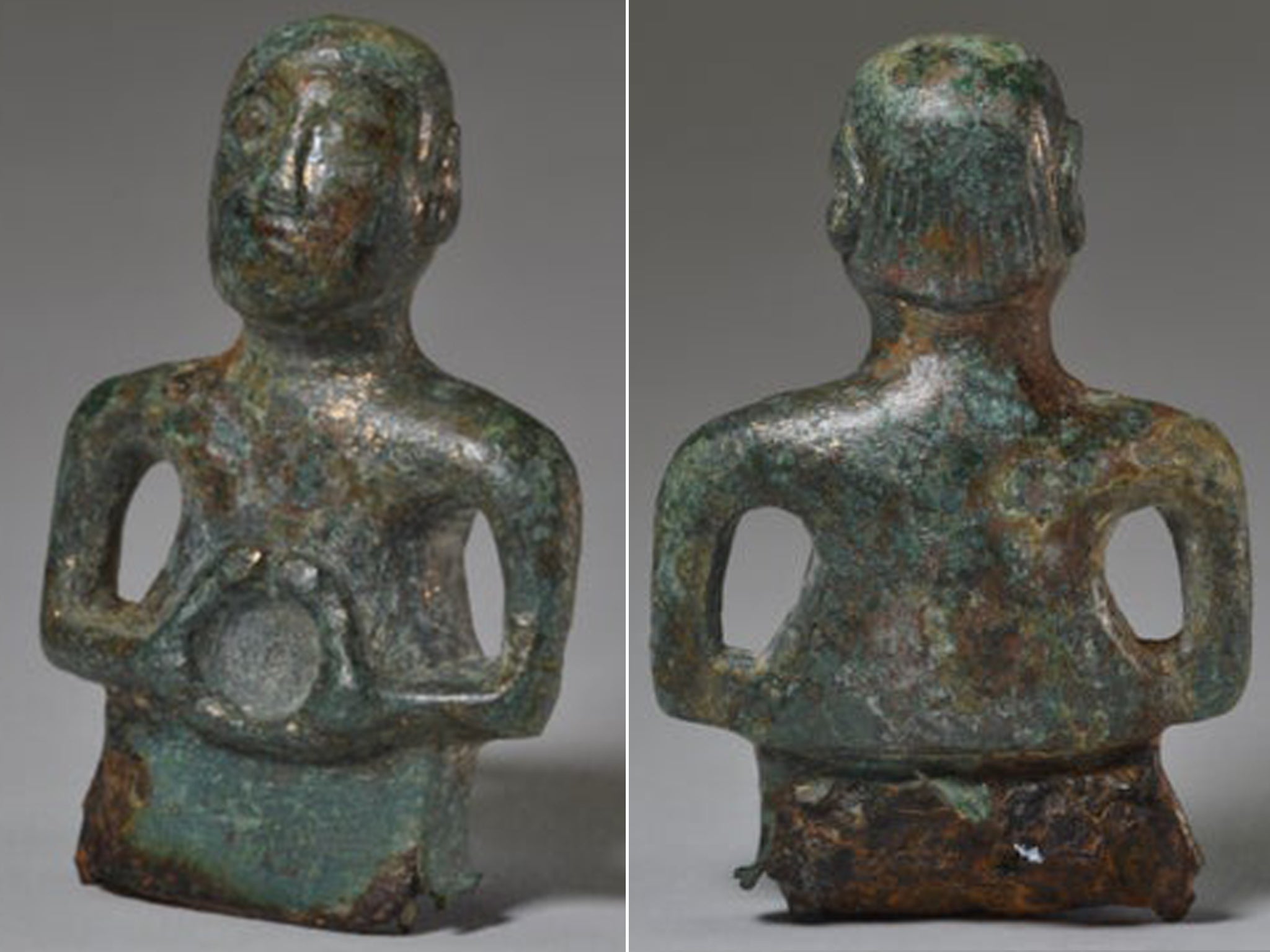Mullets may have been fashionable in Iron Age, unearthed figurine suggests
Experts say decorative artefact could be ‘indicative of current trends’

Your support helps us to tell the story
From reproductive rights to climate change to Big Tech, The Independent is on the ground when the story is developing. Whether it's investigating the financials of Elon Musk's pro-Trump PAC or producing our latest documentary, 'The A Word', which shines a light on the American women fighting for reproductive rights, we know how important it is to parse out the facts from the messaging.
At such a critical moment in US history, we need reporters on the ground. Your donation allows us to keep sending journalists to speak to both sides of the story.
The Independent is trusted by Americans across the entire political spectrum. And unlike many other quality news outlets, we choose not to lock Americans out of our reporting and analysis with paywalls. We believe quality journalism should be available to everyone, paid for by those who can afford it.
Your support makes all the difference.Some Iron-Age Britons may have favoured mullet haircuts, archaeologists have suggested after finding an ancient metal figurine sporting the look.
The 5cm figure is thought to have adorned the handle of a cooking tool and was dug up at the National Trust’s Wimpole estate in Cambridgeshire in 2018.
Now cleaned and re-analysed, its hairstyle is clearly revealed – short on the top and sides, and long at the back. The figure is also holding a torc, a kind of decorative neck ring.
Archaeologists originally thought it represented the Celtic fertility god Cernunnos, but no longer believe this to be accurate. It may represent an unknown deity, they now think.
Shannon Hogan, a National Trust archaeologist, said: “The artefact dates to the 1st century AD, and whilst possibly of Roman manufacture, exhibits very Celtic traits such as his oval eyes.
“His hairstyle and moustache are clear, which might be indicative of current trends or perhaps ‘typical’ for depictions of this particular deity.”
The artefact was found in an area called Lamp Hill during a three-month excavation in 2018. The spot was found to have been a thriving settlement that had changed several times over the centuries, with evidence suggesting it had been in use from the first century BC until the first century AD.
Later agricultural use dating to the third century was also evident, experts said.
Chris Thatcher, from Oxford East Archaeology, added: “Finds such as this give a rare and fascinating insight into aesthetics and symbolism in the latest Iron Age.
“The extent to which his hairstyle is typical of contemporary styles will never be known for certain.
“However, we think the combination of him holding a torc – associated with status – and forming the handle of a spatula either used to mix medicines, or wax for writing tablets, speak of influence and power.
“The fact that he was found on a site with so much other evidence for it being a local hub is wonderful and appropriate.”
Subscribe to Independent Premium to bookmark this article
Want to bookmark your favourite articles and stories to read or reference later? Start your Independent Premium subscription today.
Join our commenting forum
Join thought-provoking conversations, follow other Independent readers and see their replies
Comments